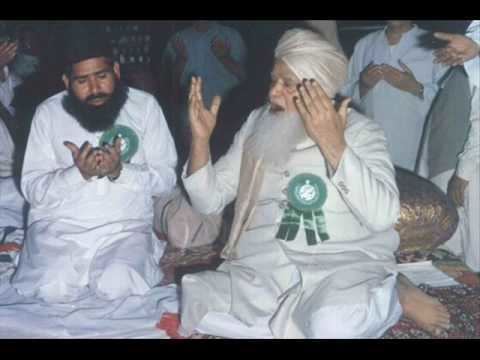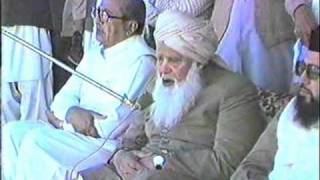Name Ahmad Kazmi | ||
 | ||
Parents Syed Muhammad Mukhtar Ahmad Shah Kazmi | ||
Syed ahmad saeed kazmi noor aur kitab
Syed Ahmad Saeed Kazmi (1913 – June 4, 1986, Urdu: سید احمد سعید کاظمی) was scholar and Sufi living in Multan. He is known for his contribution to the Pakistan Movement, Urdu translation and explanation (Tafseer) of Quran, and Dars-e-Hadith. His tomb sits next to Multan's 18th century Shahi Eid Gah Mosque.
Contents
- Syed ahmad saeed kazmi noor aur kitab
- Syed ahmad saeed kazmi tijarat
- Birth and family
- Education
- Migration to Multan
- Marriage and Offspring
- References

Syed ahmad saeed kazmi tijarat
Birth and family

Syed Ahmed Saeed Kazmi was born at Mohalla Katkoi, Amroha (India) on Thursday, 13 March 1913 (04 Rabi-us-Sani 1331 Hijri). His father Syed Muhammad Mukhtar Ahmad Shah Kazmi died when Ahmed Saeed was still an infant. The family relates with Musa Kazim through 35 steps, and this is why he is called Kazmi.
Education

Ahmad Saeed Kazmi was only six years old when his father died at the age of 39. Therefore his eldest brother Muhammad Khalil Kazmi brought him up. Because all of his family members were highly educated, he got his basic education from his mother. Later on his uncle gave him Sanad-e-Hadith and Sufist education. He became renowned of his knowledge at a very early age.

Books
Sayyid Ahmad Saeed Kazmi (رحمت اللہ علیہ) wrote a number of renowned books. Some of them are as under:
1- Milad un Nabi (صل أ لله عليه وسلم)
2- Touheed or Shirk
3- Hayat un Nabi (صل أ لله عليه وسلم)
4- Gustakh e Rasool (صل الله عليه وسلم) ki Saza
Migration to Multan
Sayyed Nafir Alam’s was a Sufi saint, he used to celebrate the urs of Khawja Moin-ud-Din Chishti Ajmeri in Multan. He invited young Ahmad Saeed to debate in Multan. When he listened to his speech, he was greatly impressed. So he continuously requested Ahmad Saeed to permanently shift to Multan. Therefore Kazmi migrated to Multan in the early 1935.
In Multan, Kazmi started teaching in his own home near Tinan Wali Khoi. In November 1935 he started giving lectures in Masjid Hafiz Fateh Sher Outside Lohari Gate, which continued for 18 years. After that He started Dars-e-Hadith in Hazrat Chup Shah’s Mosque and completed Mishkat Sharif followed by Bukhari Sharif. Here he soon became famous due to his knowledge.
In that era, Muslims of India were demanding independence and their major party was Muslim League. Ahmad Saeed was impressed by the Muslim League’s program therefore he joined. In the area of Southern Punjab, he worked to spread political awareness among Muslims and to bring them to the platform of Muslim League. He never met with Muhammad Ali Jinnah, yet he was connected with him through mail.
He was the either the founding member of most Muslim organizations or was the part of themm, such as Jamaat Ahle Sunnat, Jamiat Ulema-e-Pakistan, and Dawat e Islami.
On the request of nawab of Bahawalpur and nawab of Kalabagh Hazoor Ghazali e zaman accepted the post of Shaikh ul Hadith in Islamia university of Bahawalpur, and he taught there for long time.
Marriage and Offspring
Kazmi married into a noble family in 1934 at the age of 21, but his wife died after nine years. In these nine years, she gave birth to four daughters, three of them died in infancy while the fourth one(namely Naseem Akhter) married with his nephew Zia-ul-Matin Kazmi; she also gave birth to four daughters(namely Sualiha, Sajida, Abida and Fatima) and died in 1962. His second wife also practiced to Sufism and was a mureed of Khalil Ahmad Kazmi. His son Hamid Saeed Kazmi served as a federal Minister for Religious Affairs and another named Mazhar Saeed Kazmi who runs a Madrassa in Multan.
